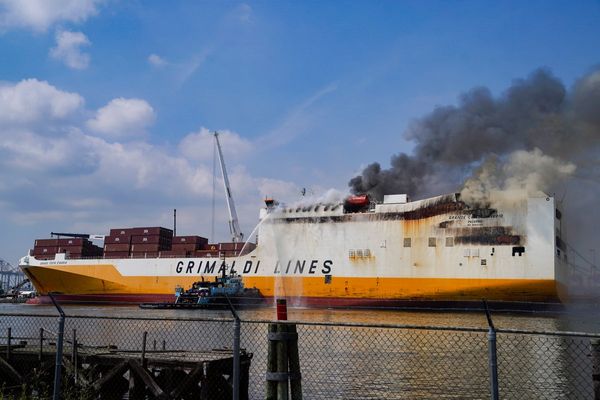London is facing a heightening risk of wildfires as the capital prepares for what could be the hottest day of the year so far.
The Met Office said temperatures would peak on Friday in London and south-east England with the mercury set to hit 23C, 10C above average for the time of year.
There could be uninterrupted sunshine until Sunday morning followed by a further week of sunny spells and dry conditions, the forecaster said.
But the London Fire Brigade (LFB) urged caution and warned against using barbecues, saying the wildfire risk was "heightened" due to low rainfall.
It comes after firefighters battled major blazes in Northern Ireland and the Scottish Fire and Rescue Service issued "extreme" wildfire warnings for Thursday in south-west, eastern, central and northern Scotland.

The hottest day of the year so far in the UK was on April 4 with a high of 23.7C in Otterbourne, Hampshire.
LFB assistant commissioner Thomas Goodall said: "The risk of wildfires in London currently is heightened and this risk increases with every day that passes without rainfall."
Historically low rainfall saw England have its sixth driest March and Wales have its fourth driest since records began in 1836, according to the Met Office.
Dan Stroud, a meteorologist at the Met Office, said: "The average for this time of year is around 13C, so it's going to be about 10C above average on Friday.
"We've got high pressure at the moment which effectively acts like a force field.
"It actually keeps fronts and clouds largely at bay and keeps conditions settled and dry underneath the area of high pressure."

According to LFB, the service saw a 48% increase in calls last weekend compared with the same weekend last year.
This year has seen at least 286 wildfires hit the UK so far, more than 100 above the number recorded in the same period in 2022, a year that saw record-breaking temperatures and unprecedented wildfire activity.
Wildfire expert Dr Olivia Haas told the Standard that wildfires tend to happen in the UK in the spring rather than in the summer as vegetation “is still quite dry and ready to burn”.
The University of Reading researcher explained that wildfires in the capital would most likely damage infrastructure and delay trains rather than burning through the city.
She told the Standard: “When people think of wildfires, they tend to think of dramatic events, like whole forests burning or a city burning.
“Cities don’t usually burn, primarily because they are concreted over.
“So a fire spreading through London is highly unlikely as there isn’t continuous vegetation to burn.
“In a way, London isn’t the area where the fire risk is very high… But in the UK there are more vegetated areas [which burn]. It’s areas like peatlands and the moors.
“You get wildfires quite frequently in Scotland. But they won’t be high intensity trees, burning it will be grass and heather.
“They won’t necessarily look like the wildfires you are imagining.”
The expert explained that wildfires are expected to happen more frequently in the UK as the planet gets warmer and that there needs to be a “long-term shift” towards addressing the fires in the UK.

Mr Goodall added: "A minority of the fires we've attended recently are believed to have been started deliberately.
"What might seem like harmless fun has the ability to turn into something much more serious, particularly given current weather conditions.
"We know that people will undoubtedly want to be out enjoying the warm sunshine, particularly as we head into the weekend.
"But we're asking Londoners to behave responsibly to help reduce the risk of fires starting in the first place."
He continued: "Over the Easter holidays, parents should ensure that their children understand the fire risks to help protect our open spaces.
"We also urge Londoners to take steps to ensure they are not inadvertently starting a fire.
"They can do this by not using barbecues in open spaces or on balconies, including disposable ones, to throw rubbish away, and to dispose of cigarettes carefully."







